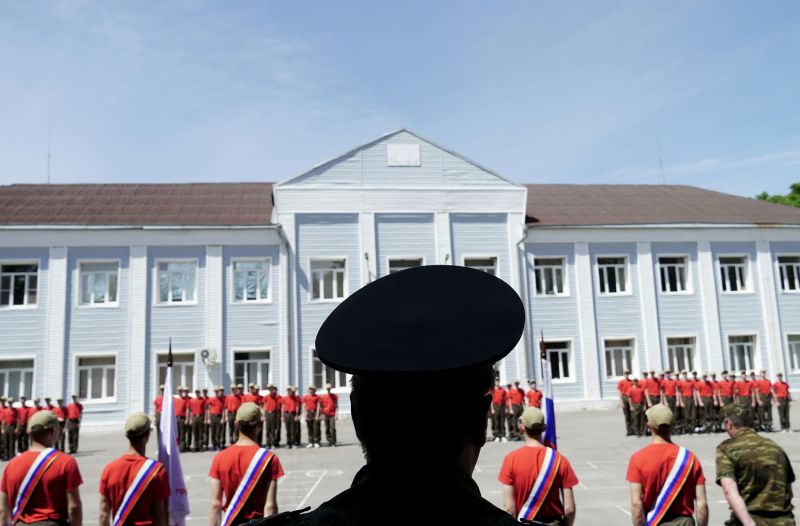In the heart and heat of political and military tensions between Russia and Ukraine, an unexpected target group – Ukrainian teenagers – has come under the crosshairs of a calculated Russian strategy. Driven by an objective to expand its influence and raise an army within Ukrainian borders, Russia’s war machine has launched a coordinated effort to engage, train, and militarize Ukrainian youth.
Understanding the underpinnings of this strategy necessitates an examination of the socio-political context. The adolescents in Ukraine, nurtured in a culture where resilience and honor are highly esteemed, already possess a readiness to protect their homeland. In leveraging this readiness, Russia seeks to augment its existing troop strength and create a loyal and potent force within enemy lines. However, it is essential to acknowledge that this strategy doesn’t solely revolve around military training. The initiative also combines elements of political, historical, and cultural education, designed to forge an unshakeable bond between these young recruits and Russia.
The methodology employed by the Russian Army is simultaneously covert and invasive. Numerous reports suggest Russian-trained personnel infiltrating Ukrainian-based schools, youth clubs, and establishing training camps disguised as fitness and survival sessions. These forums covertly impart military skills such as tactical combat maneuvers, weaponry use, and survival tactics. Paired with a steady dose of ideological indoctrination, the teenagers are effectively being forged into soldiers.
Further evidence underlining the strategic depth of this initiative is found in the case of Youth Army, Russia’s military-patriotic movement aimed at children and teenagers. With more than 750,000 members only four years after its launch in 2016, the organization has swiftly spurted across the length and breadth of Russia, as well as former Soviet territories, including Ukraine. The Youth Army’s activities range from lessons in Russian history and mock-battle competitions to training camps in wilderness survival, marksmanship, and scout skills.
Critically, two key consequences arise from this strategy. Firstly, it creates a long-term threat to stability and security within the region. An unseen army growing within Ukrainian borders holds the potential to disrupt any future dialogue or negotiation between the two nations. The second consequence is moral. The delicacy of manipulating young minds, robbing them of a normal adolescence, under the guise of patriotism paints a dark picture of moral compromise in times of conflict.
Moreover, this shift towards militarizing children not only strains the international human rights law, but also smacks of desperation. It reveals unmasking Russia’s grim determination to maintain territorial influence over Ukraine, a sign of an undercurrent of fear that their grip is weakening.
Inevitably, this initiative by Russia’s war machine has sparked international outcry. Protection of children in conflict zones remains paramount in any democratic rule, as stipulated by the United Nations’ convention on the rights of a child. The global community is now called upon to augment their efforts to counter this Russian tactic. Necessary measures may include employing international pressure, sanctions, concrete steps for children’s protection, and, paramount of all, promoting awareness of the situation. Creating a global understanding of these practices will enable international organizations, states, and civil society to stand against Russia’s attempts to militarize Ukraine’s youth.
In conclusion, the complexity and multifaceted nature of this issue present significant challenges for Ukraine and the international community. The manipulation and indoctrination of young minds perpetuate the cycle of violence and hostility. As the world becomes more informed about these actions, collective action can help to thwart this strategy and secure a safer, peaceful future for Ukraine’s youth.




